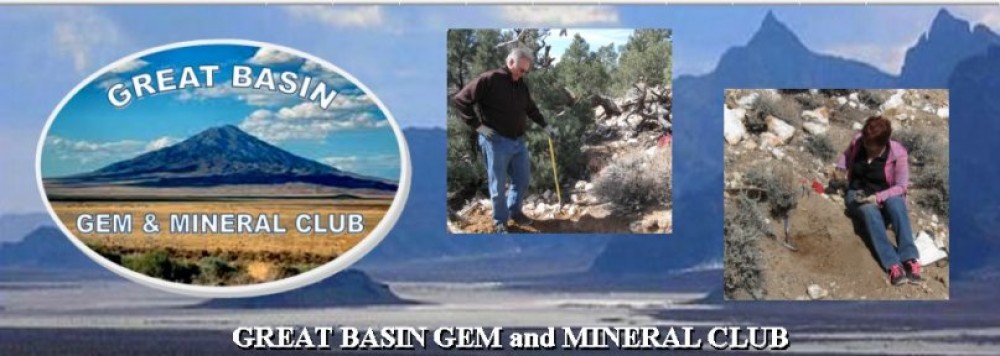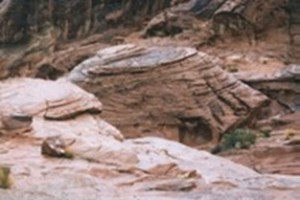Nevada designated sand stone as its official state rock in 1987. Sandstone, in its more traditionally recognized form or as quartzite, is found throughout the state. The sandstone originated when Nevada was under a huge inland sea millions of years ago. In areas such as the Valley of Fire State Park and Red Rock Canyon Recreational Lands, both near Las Vegas, it provides some of Nevada’s most spectacular scenery. The State Capitol, and the former United States Mint, both are built of sandstone.
Nevada State Metal: Silver (1977)
Nevada designated silver as its official state metal in 1977. Nevada’s nickname, of course is the ‘Silver State.’ Nevada’s nickname, of course, is the ‘Silver State.’ In 1859, in the Virginia Range of Western Nevada on the site of Virginia City, a rich mineral deposit was discovered. This ‘Comstock Lode’ was named for  Henry Tomkins Paige Comstock, a California prospector who first laid claim to the land. This one lode yielded more than three hundred million dollars in silver and gold in twenty years. This bonanza resulted in a great increase in the Nevada population. Other strikes were made but none would compare to the size of the Comstock. The rich deposits of silver in Nevada have been important factors in the establishment, growth, and prosperity of Nevada.
Henry Tomkins Paige Comstock, a California prospector who first laid claim to the land. This one lode yielded more than three hundred million dollars in silver and gold in twenty years. This bonanza resulted in a great increase in the Nevada population. Other strikes were made but none would compare to the size of the Comstock. The rich deposits of silver in Nevada have been important factors in the establishment, growth, and prosperity of Nevada.
Nevada State Fossil: Ichthyosaur (1977)
Nevada designated the Ichthyosaur as its official state fossil in 1977. Ichthyosaurs ruled the world’s oceans during the Mesozoic era 200 million years ago. Ichthyosaurs–whose name means “fish-lizard”–were streamlined marine reptiles that ranged in size from seven to thirty feet long. They had sharp teeth in long jaws, and big eyes. They had four crescent-shaped fins, a stabilizing dorsal fin, and a fish-like tail with two lobes. They breathed air with lungs through nostrils that were close to the eyes near the top of the snout. They gave birth to live young (fossils have been found with baby Ichthyosaurs in the abdomen). The Ichthyosaurus shonisaurus popularis was the name given to a species discovered in Nevada in 1928 (although reports state the discovery was in 1928, the expedition to the Humboldt region is referred to as: The Saurian Expedition of 1905). Some thirty-seven of these reptiles became stranded in mud flats from a receding equatorial sea that once covered Nevada. The longest specimen found at this site, located at an elevation of 7,000 feet in the Shoshone Mountain Range near the town of Berlin in northwestern Nye County, Nevada, was fifty-five feet long and represented the only complete fossilized skeleton of the species ever found in the United States.
Nevada State Gemstones: Nevada Turquoise [semiprecious] (1987) & Virgin Valley Black Fire Opal [precious] (1987)
Nevada has designated two official state gemstones. Nevada designated Nevada turquoise as the its official st ate semi-precious gemstone in 1987. Turquoise is a hydrous phosphate of aluminum and copper. The copper gives it its blue color. Sometimes called the ‘jewel of the desert,’ Nevada turquoise is found in many parts of the state.
ate semi-precious gemstone in 1987. Turquoise is a hydrous phosphate of aluminum and copper. The copper gives it its blue color. Sometimes called the ‘jewel of the desert,’ Nevada turquoise is found in many parts of the state.
In addition, Nevada designated Virgin Valley black fire opal as its official state precious gemstone in 1987. Fire opal is classed as an oxide of silica with a small amount of water. Although the amount of water is less than ten percent, the water helps produce the rainbow colors when light strikes the opal. Opal, especially the fire variety, is highly prized as a gemstone. The Virgin Valley in northern Nevada is the only place in North America where black fire opal is found in any significant quantity.


